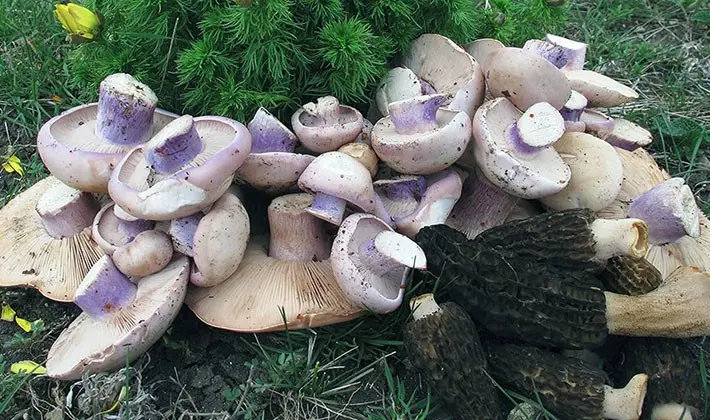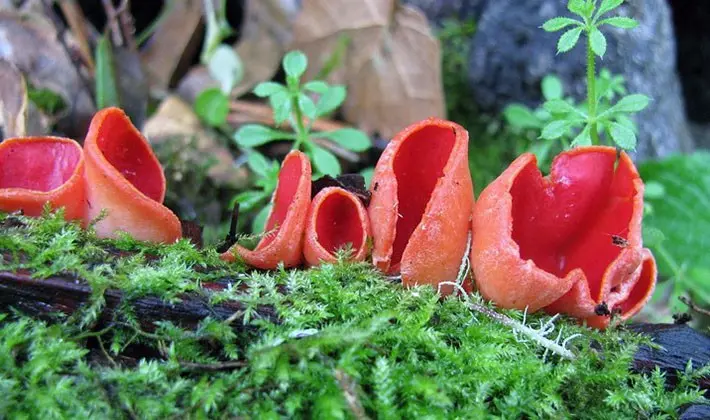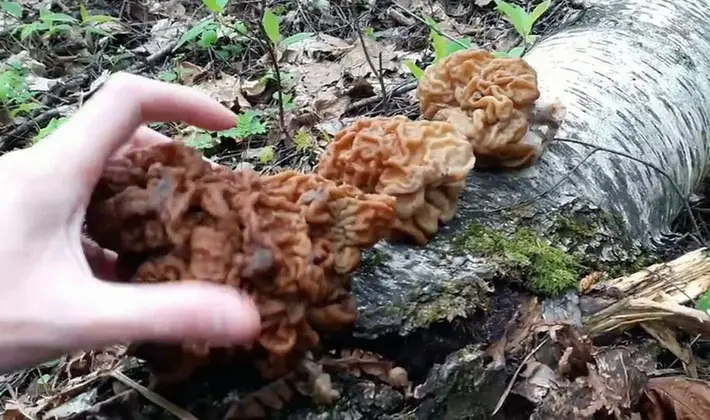Contents
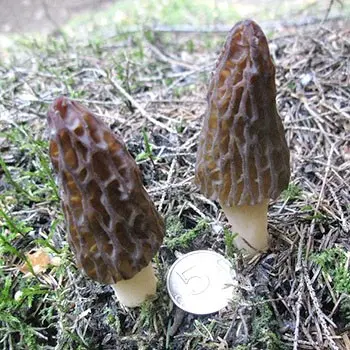 Those who are impatient to engage in “quiet hunting” can not wait for the main mushroom season and go with a basket to the forest in the spring.
Those who are impatient to engage in “quiet hunting” can not wait for the main mushroom season and go with a basket to the forest in the spring.
However, in this case, you should be very careful: at this time there are not as many edible mushrooms as in autumn, there is a high risk of bringing home poisonous fruiting bodies, which are easily disguised as edible species.
This article presents photos, names and descriptions of edible and inedible spring mushrooms that can be found in the forests near Moscow.
Picking spring mushrooms in a forest near Moscow (with video)
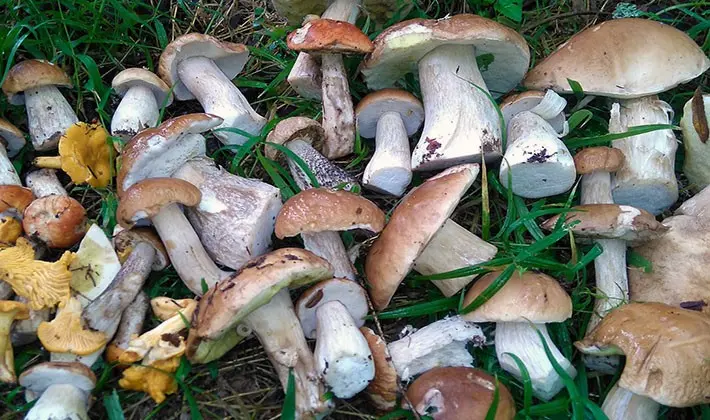
Spring mushrooms in the villages are well known, but urban and suburban residents know them poorly. During this period, you can find great-tasting morels, oyster mushrooms and summer mushrooms. However, it is in the spring that the first hallucinogenic and poisonous mushrooms appear, for example, ordinary lines.
In early spring, when the snow has not completely melted and the first thawed patches have appeared, autumn oyster mushrooms can be seen. They are called autumn because they appear in autumn, but hide under the snow all winter. They can be simultaneously attributed to winter and early spring mushrooms. They keep well in the spring. In early spring, in forest clearings, you can find everywhere: strobiliuruses, sarcoscyphs, xerompholines.
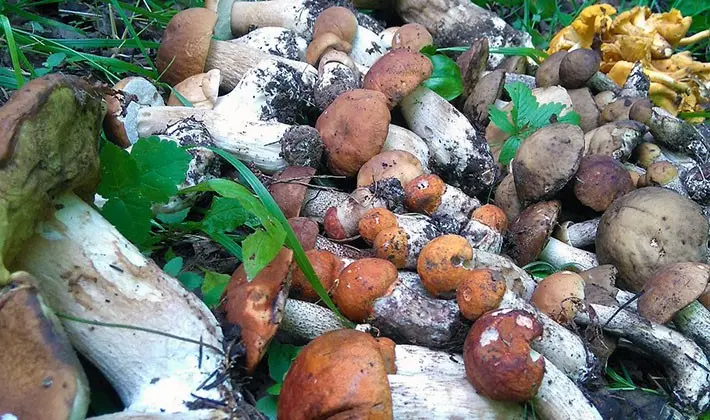
In spring, tinder fungi (May, variable) and many other species begin to grow intensively in the forests.
Spring walks or hikes in the forest are not only good for health, they also give you a boost of energy and awaken inner strength. This period is also good because there are no mosquitoes and moose flies in the forest yet, and nothing prevents you from enjoying nature. It is in spring that you can not only pick mushrooms, but also hear the wonderful singing of birds, enjoy the pictures of their current flight, when the male soars up, flaps his wings and sings his wonderful trills.
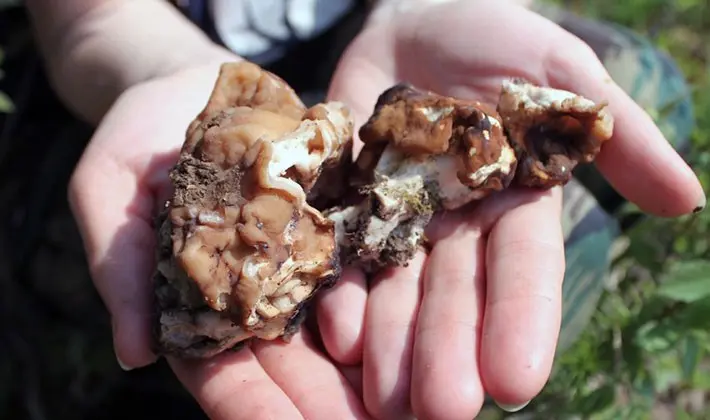
At the beginning of the spring season, there are no other blood-sucking insects, but ticks already appear in May, and their activity is especially high at the end of May and at the beginning of June, therefore, during this period, you should have tight clothes, a hat or a handkerchief, use appropriate means that impregnate clothes .
This video tells in detail about spring mushrooms in the forests near Moscow:
Strobiliurus edible and cuttings

After the snow melts, the first spring edible mushrooms the size of a ten-kopeck coin appear in the forest on rolling cones and on a spruce litter. They are called strobiliuruses. These early spring mushrooms grow in groups. Although strobiliurus are edible, they are not very tasty and it is problematic to collect them due to their small size.
A photo and description of spring strobilurus mushrooms of different types is presented below:
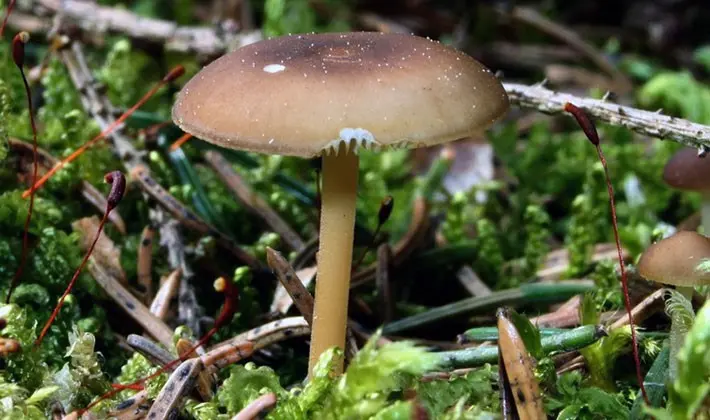
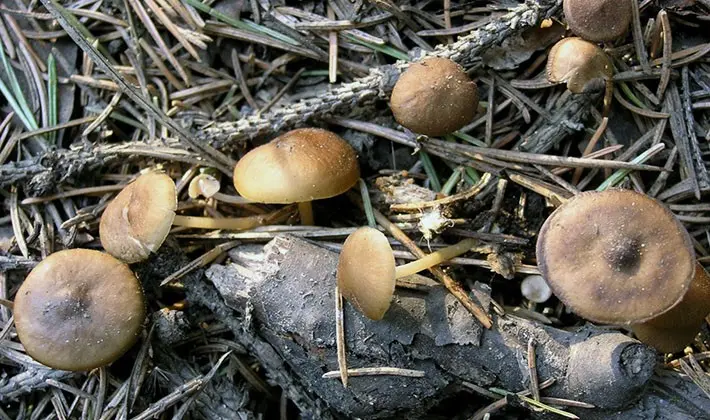

Strobilurus edible, or juicy (Strobilurus esculentus).
Habitats: spruce forests, on spruce litter or on cones, grows in groups.
Season: early mushroom, April-May.
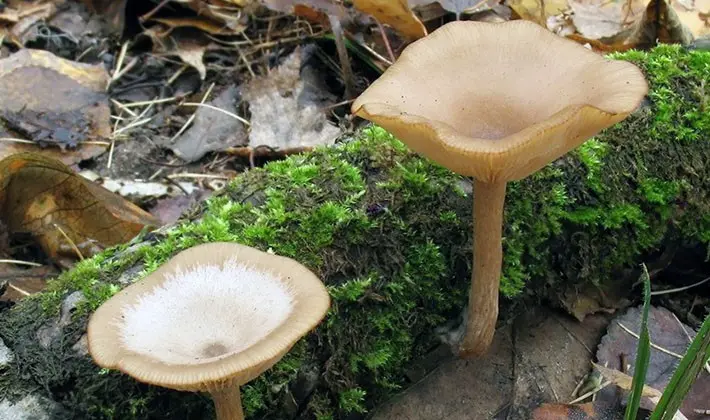
The cap is 1-2 cm in diameter, sometimes up to 3 cm, at first convex, later prostrate, flat. A distinctive feature of the species is a brownish or chestnut slippery hat with a tubercle in the center and a thin edge. The color in the center of the cap is darker, brown-brown.
As you can see in the photo, these spring mushrooms have a thin stem, 3-5 cm tall and 1-3 mm thick, cylindrical, yellowish above, yellowish-brown below:
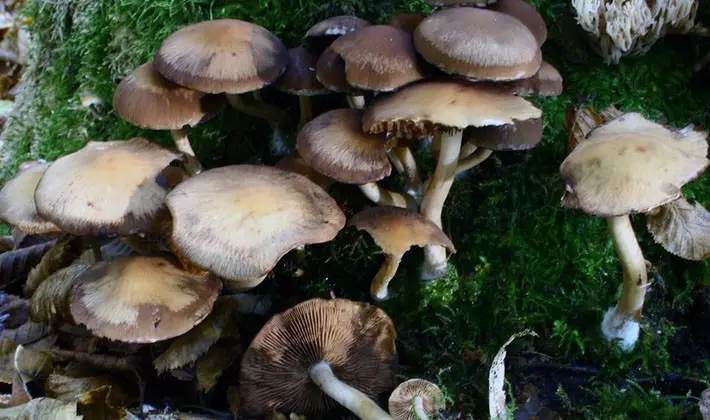
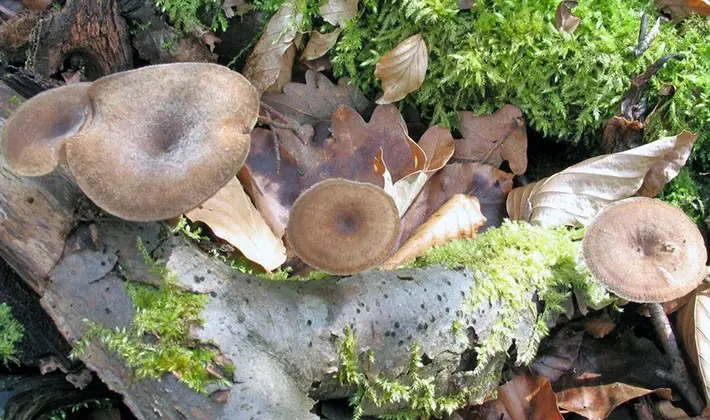
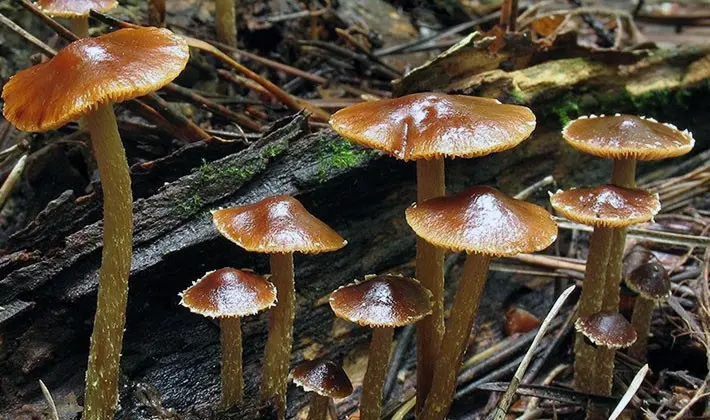
The second distinguishing feature of the species is the presence of a long shaggy rooting with woolly strands stretching towards the cone.
The flesh is white, dense, with a pleasant, slightly pungent smell at first, later with a slightly herring smell.
Records of medium frequency, notched-attached, white at first, later yellowish. Spore powder is white.
Variability: the color of the cap varies from brownish to brownish-brown.
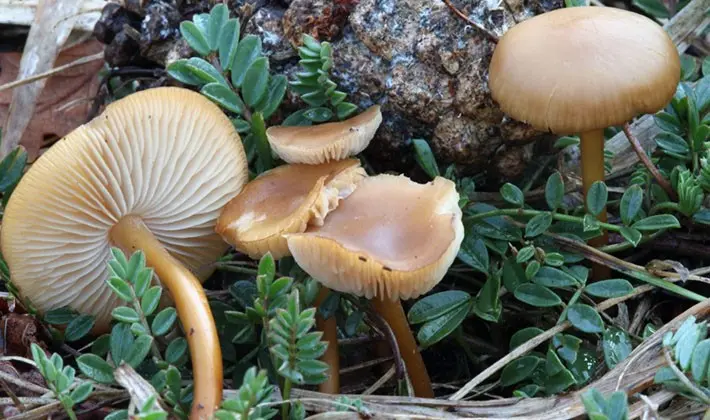
Similar types. Edible strobiliurus is similar to the edible cutting strobiliurus (Strobilurus tenacellus), which is distinguished by a more convex yellow-brown cap.
These first spring mushrooms are edible, they belong to the 4th category. Only young hats are used for food, they are fried after preliminary boiling for 15 minutes.
Strobiliurus cuttings (Strobilurus tenacellus).
In addition to edible strobiliurus, there are also inedible Lai, which are distinguished by a herring smell. They are called cutting strobiliuruses.
Habitats: pine and spruce forests, on litter or on cones, grows in groups.
The season for collecting these spring mushrooms: May-June.
The hat is 0,7-1,5 cm in diameter, sometimes up to 2 cm, at first convex, later prostrate, flat. A distinctive feature of the species is a light brown, pinkish-brown matte hat with a blunt tubercle in the center, uneven and with a slightly ribbed thin edge.
The stem of these mushrooms, growing in the spring in the Moscow region, is thin, 2-5 cm tall and 1-2,5 mm thick, cylindrical, cartilaginous, often pubescent at the base, white above, yellowish below. The second distinguishing feature of the species is the presence of a long shaggy rooting with woolly strands stretching towards the cone.
Look at the photo – the pulp of these mushrooms, which appear among the first in spring, is white, dense:
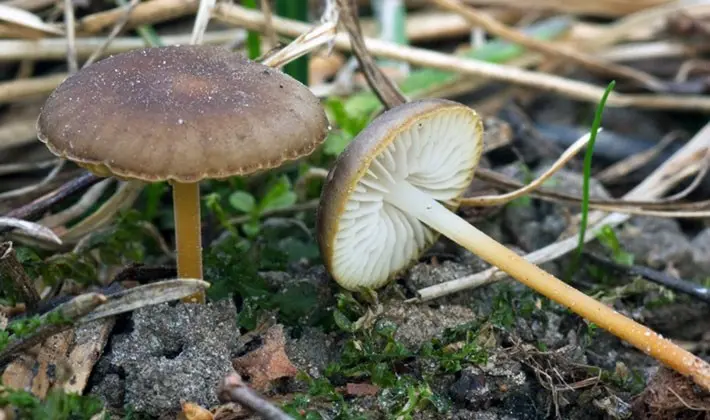
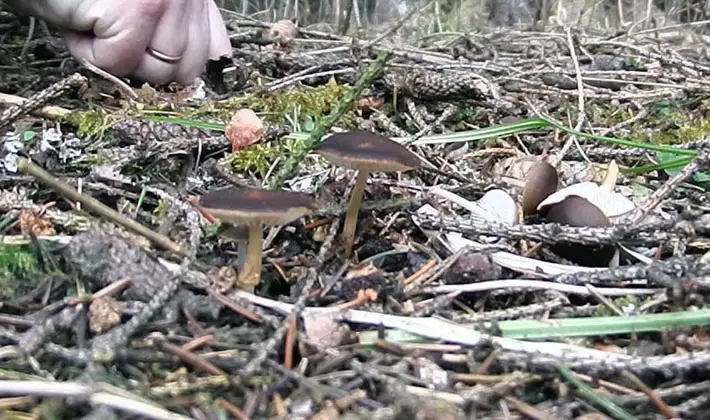
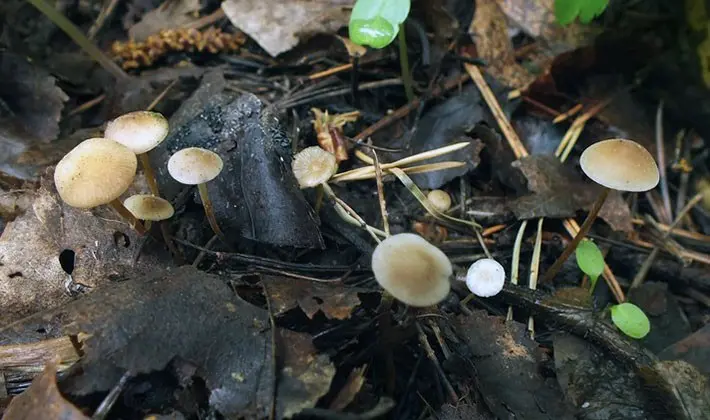
At first, the smell of the pulp is pleasant, slightly herring, later it becomes unpleasant, slightly musty.
Records of medium frequency, notched-attached, white at first, later yellowish. Spore powder is white.
Variability: the color of the cap varies from brownish to brownish-brown.
Similar types. The cutting strobiliurus is similar to the edible strobilurus (Strobilurus esculentus), which is distinguished by a shinier cap with a darker brownish-brown tint, a more brightly colored stem, and a less strong smell.
These first spring mushrooms are considered conditionally edible due to the specific herring smell.
Spring xerompholin mushroom
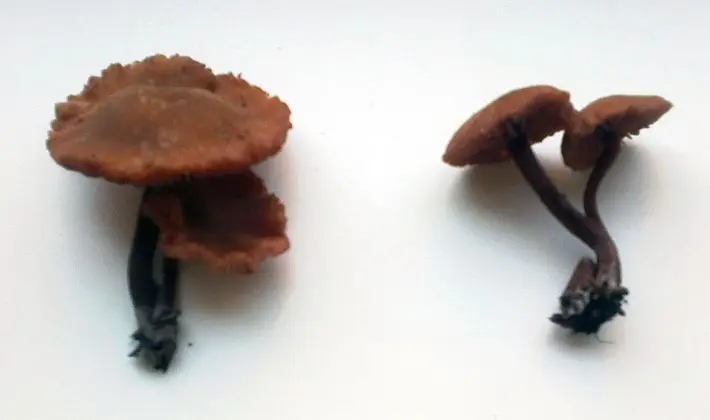
At the end of April and at the beginning of May, the first colonies of mushrooms appear, which completely occupy a rotten stump or a rotten trunk. These are, first of all, stem-like xeromphalina (Xeromphalina cauticinalis). These spring mushrooms growing in the Moscow region are cute, reminiscent of tiny yellow chanterelles with a long thin stem. These little-known fruiting bodies can be seen near country roads and paths, in a wet area.
Habitats: in mixed and coniferous forests, grow in large groups on rotten stumps.
Season: May-July.
The hat has a diameter of 0,5-3 cm. A distinctive feature of the species is a shiny, sticky bright yellow or yellow-orange umbrella-shaped hat with a small depression in the center and radial stripes from translucent plates.
Leg 2-6 cm high, 1-3 mm thick. From the cap there is a cone, then the stem is smooth, cylindrical, pinkish-brown or yellowish-orange.
The plates of these mushrooms, which are among the first to grow in the spring, are rare, at first creamy, later yellowish-creamy, descending in a cone along the stem.
The flesh is white at first, later light yellow, brittle, odorless.
Variability. The color of the cap varies from yellow-orange to egg.
Similar types. Xerampholine stem-like in color is similar to oak hygrocybe (Hygrocybe quieta), which also has a yellowish-orange color, but there is a tubercle on the cap.
Xerompholine mushrooms are inedible.
Poison False Mushroom
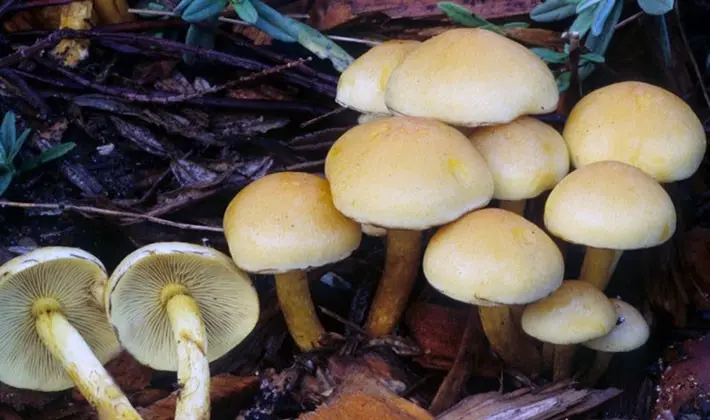
The most massive spring poisonous mushrooms in the Moscow region are sulphurous-yellow pseudomushrooms. They grow in large groups on the stumps and trunks of fallen trees. From a distance, they look like edible summer mushrooms, but differ in the sulfur-yellow color of the underside of the cap. Most often they are found in mixed forests where spruce, birch, oak, and aspen grow.
Habitats of the sulfur-yellow false foam (Hypholoma fasciculare): rotting wood and stumps of hardwoods and conifers, growing in large groups.
Habitats: rotting wood and stumps of hardwoods and conifers, growing in large groups.
Season: April – November
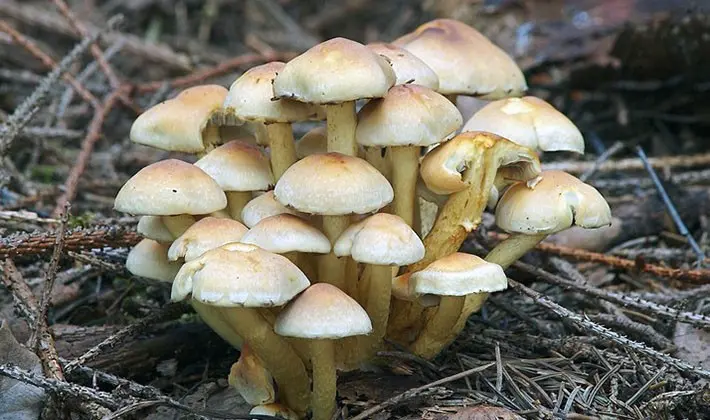
The cap has a diameter of 2-7 cm, at first hemispherical, later convex. A distinctive feature of the species is a light yellow or light pinkish-brown convex-flat cap with a noticeable tubercle, which has a brighter red-brick color.
The stem is thin and long, curved, 3-9 cm high, 3-8 mm thick, has the same color as the cap, or is slightly lighter, with a yellowish tint, cylindrical, slightly narrowed near the base, with traces of a ring. The base of the stem is darker – orange-brown.
Pulp: sulfur-yellow, tender and fibrous, with an unpleasant odor and a bitter taste.
The plates are frequent, wide, adherent, sulfur-yellow or olive-brown.
Variability. The color of the cap varies from yellow-brown to sulfur-yellow.
Similar types. The inedible sulfur-yellow false honey agaric can be confused with the edible sulfur-yellow false honey agaric (Hypholoma capnoides), which differs in the color of the plates – light gray, as well as a more convex oily yellowish-orange hat.
These mushrooms are poisonous and toxic.
Collecting psatirell mushrooms in the forest in spring
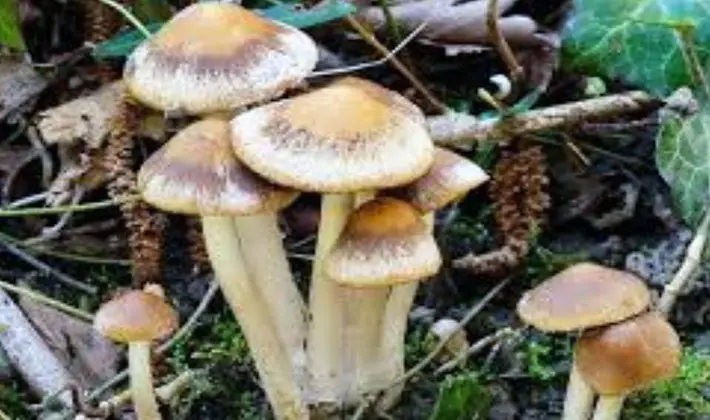
Habitats of gray-brown psatyrella (Psathyrella spadiceogrisea): soil, rotten wood and stumps of deciduous trees, growing in groups.
Season: May – October.
The cap has a diameter of 2-5 cm, at first bell-shaped, later convex-prostrate with a blunt tubercle in the center. A distinctive feature of this spring species of mushrooms is a gray-brown cap with radial fibrillation, which looks like thin dashes, as well as a light thin border along the edge, a uniform color in young specimens and large colored zones in adult mushrooms. These zones are of two types: yellowish-pink in the center of the cap or gray-brown in the center, and further, approximately in the middle zone, a yellowish-silver concentric zone with blurry edges.
The leg has a height of 4-9 cm, a thickness of 3 to 7 mm, cylindrical, slightly thickened at the base, hollow, smooth, whitish, mealy in the upper part.
Pay attention to the photo – at the base, the leg of this edible spring mushroom is darker, brownish:
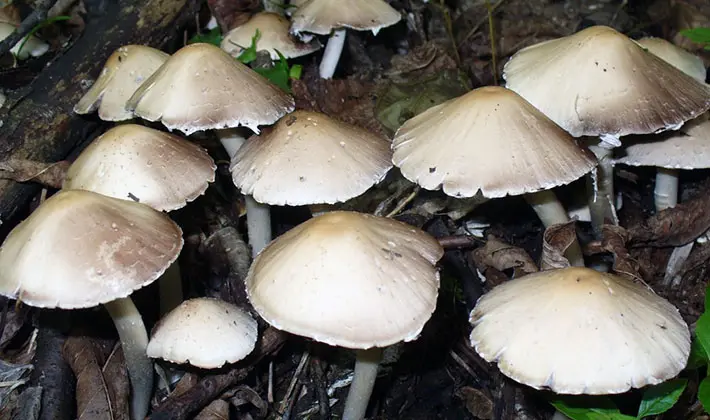
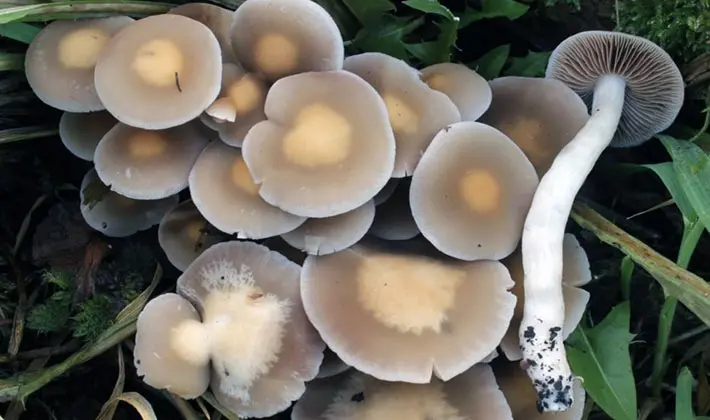

Pulp: watery, whitish, fragile, thin, with a pleasant taste and a good mushroom smell.
The plates are adherent, frequent, narrow, reddish-brown.
Variability. The color of the cap can vary from gray-brown to reddish-brown with yellowish-pink spots or zones.
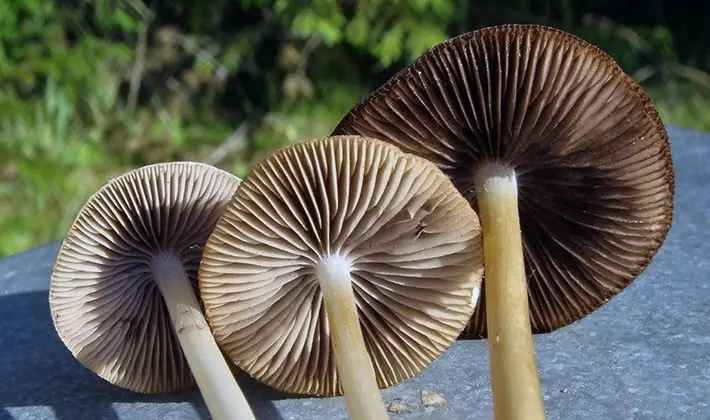
Similar types. The gray-brown psatyrella is similar in shape and size to the velvety psatyrella (Psathyrella velutina), which is distinguished by a reddish-buffy cap, densely covered with fibers, giving a velvety appearance.
Psatirrella mushrooms are edible, category 4, after preliminary boiling for at least 15 minutes.
Next, you will find out what other mushrooms grow in spring.
edible collibia mushroom
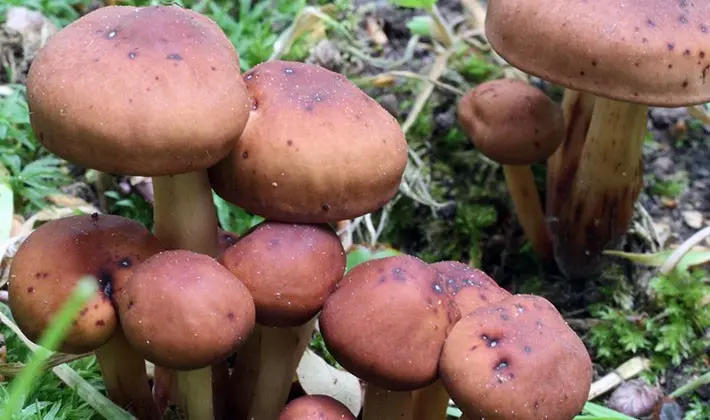
In the middle and end of May, the first species of collibia appear. These include primarily chestnut or oil collibia. These cute little mushrooms attract with their spectacular appearance, although they are small in size. Although they are edible, they are not harvested due to their small size and the lowest, fourth category in terms of nutritional properties.
Habitats of chestnut collibia, or oily (Collybia butyracea): mixed and coniferous forests, on forest floor, on rotting wood. These mushrooms usually grow in groups in the spring forest.
Season: May – October.

The cap has a diameter of 3-8 cm, at first hemispherical, later convex with a round tubercle and then prostrate with a flat tubercle and raised or convex edges. A distinctive property of the spring mushroom called collibia is a chestnut-brown color of the cap with a flat tubercle of a darker brown color and light, cream or light brown edges.
Leg 4-9 cm tall, thin, 2-8 mm thick, cylindrical, smooth, first creamy, later pale brown. The base of the leg is thickened.
The flesh is watery, thin, soft, whitish or yellowish, at first odorless, later with a slight moldy odor.
The plates are cream or yellowish, notched-grown. Between the adherent plates are short free plates.
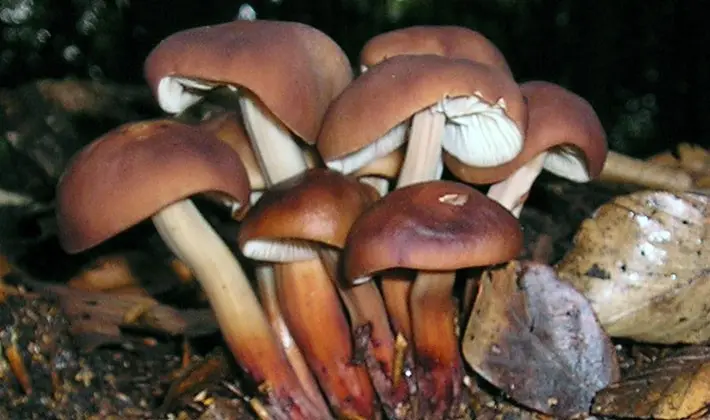
Variability: the color of the cap is variable depending on the maturity of the mushroom, the month and the humidity of the season. The color can be chestnut-brown, especially in early summer, red-brown with a brown tint, brown-brown with a dark middle, gray-brown with an olive tint, lilac-brown. During the dry season, the cap fades to light tones of yellow, cream, and light brown.
Similar types. The chestnut collibia is similar in shape and size to the edible wood-loving collibia (Collybia dryophila), which differs in that it has a much lighter hat.
Edibility: edible, but require pre-boiling in 2 waters to eliminate the smell of mold. They belong to the 4th category.
Inedible otidea mushroom
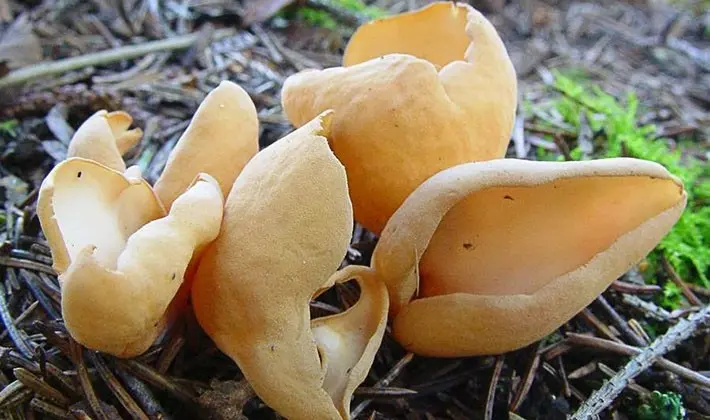
The spring forest brings us surprises. One of these surprises is graceful otideas. Their name speaks for itself. You walk through the forest and suddenly you see delicate yellowish-straw ears or tulips on the forest floor. They tell us: look, what a unique and diverse nature. Guard us!
Habitats of graceful otides (Otidea concinna): on the forest floor in mixed forests, growing in groups.
Season: May – November.
The fruit body has a diameter of 2 to 8 cm, a height of 1 to 6 cm. Outwardly, these mushrooms are often similar in shape to tulips. The outer surface has a granular or powdery coating. The inside is yellow-brown.
As shown in the photo, these first spring mushrooms grow in groups, united by one common base:
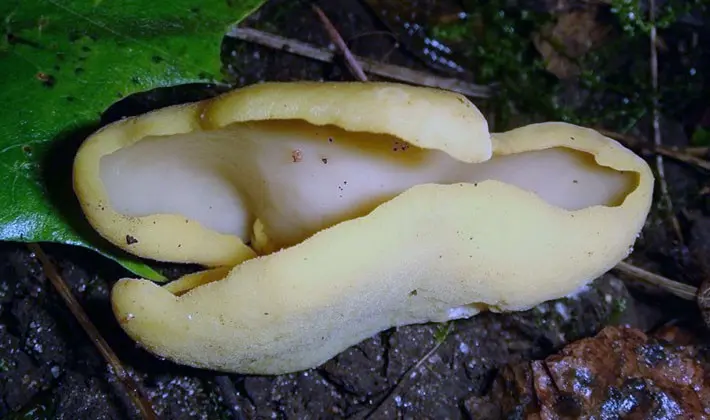
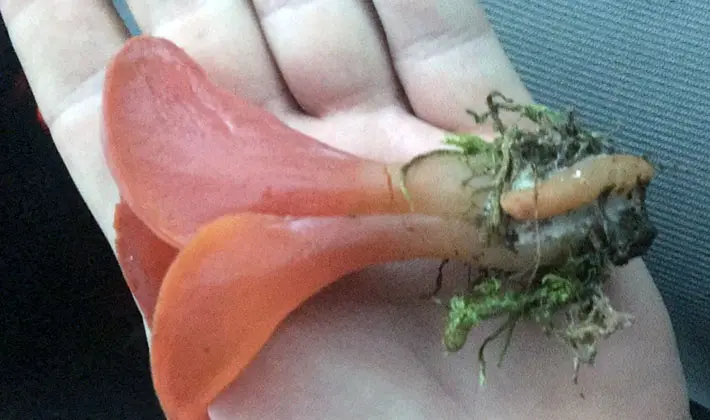
The base of the fruiting body is leg-shaped.
Pulp: brittle, almost thick, light yellow.
Variability. The color of the fruit body can vary from light brown to yellow-brown and lemon yellow.
Similar types. The graceful otidea is similar to the bubbly pepper (Peziza vesiculosa), which is distinguished by its bubbly shape.
Graceful otideas are inedible.
These photos show spring mushrooms growing in the Moscow region:
